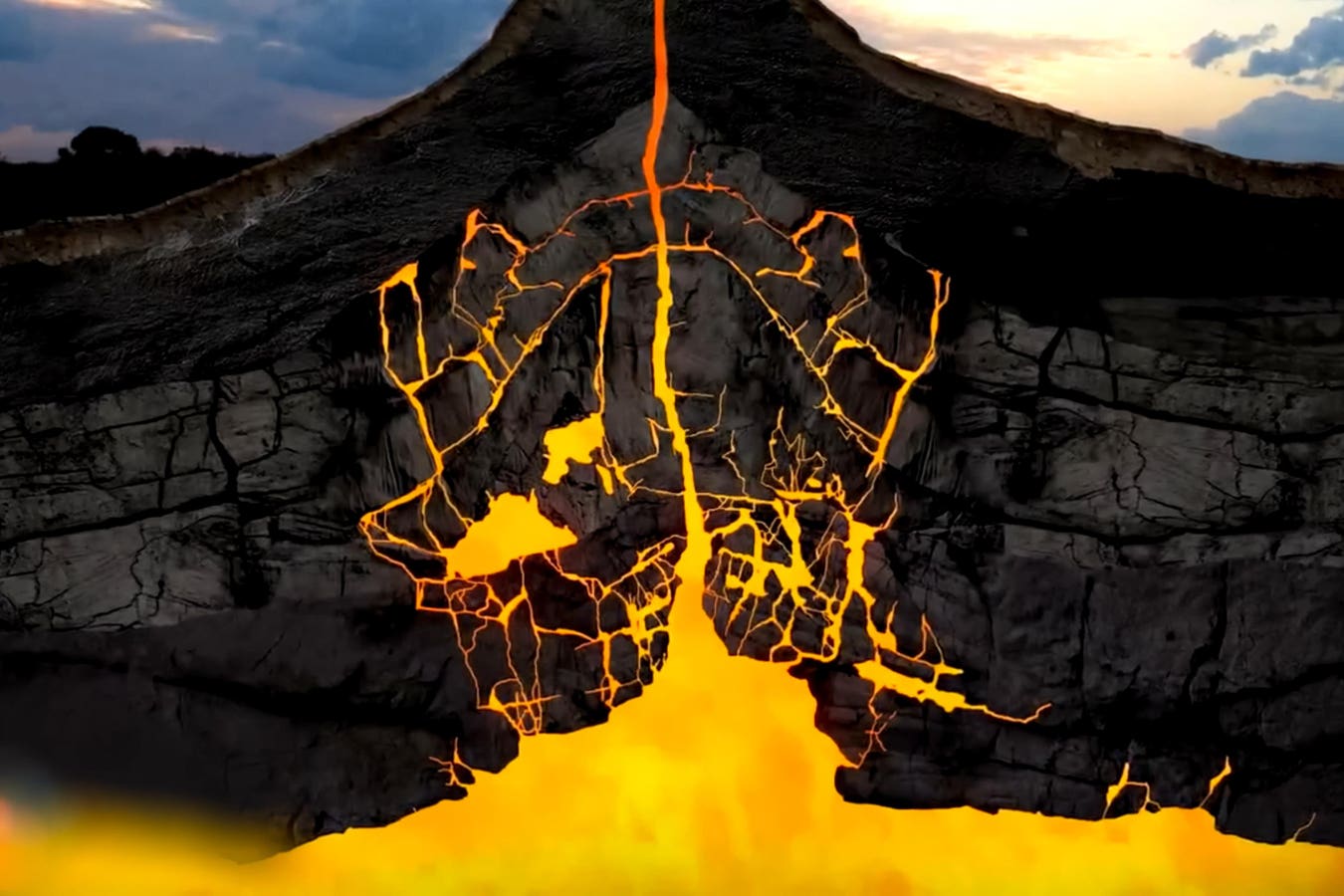The scheme of the volcano in the earth’s crust, an illustration of the structure of the volcano.
getty
A team from the University of Geneva, Switzerland, in collaboration with the National Institute of Geophysics and Volcanology (INGV) in Italy, has successfully recreated a 3D-model of the interior of an active volcano. This model, produced with unprecedented accuracy, was obtained by combining nodal seismic networks and artificial intelligence.
Our planet is home to more than 1,500 active volcanoes, with over 800 million people living near these often unpredictable giants. Developing tools to better understand and anticipate eruptions is therefore a major research challenge.
“Until now, volcano seismology has primarily focused on earthquake signals beneath volcanoes. Large-scale studies have certainly helped to outline their internal structures, but very few have examined in detail what occurs deep underground,” explains Douglas Stumpp, a doctoral student in the Department of Earth Sciences, Earth and Environmental Sciences Section, at the Faculty of Science, University of Geneva, and lead author of the study.
Vulcano is located on the eponymous island off the coast of northern Sicily and its known activity spans at least 2,000 years. Since 2021, the volcano showed increased explosive activity, producing as series of ash and steam eruptions. Taking advantage of the seismic energy released by the eruptions, the researchers deployed around 200 portable seismic sensors across the island. For a month, these state-of-the-art seismometers recorded natural ground vibrations over a wide range of frequencies. This massive volume of data was then processed by Yggdrasil, the University of Geneva’s supercomputer named after the world-tree in Nordic mythology, source of secret knowledge according to the myth.
Thanks to this data, the team was able to precisely reconstruct Vulcano’s internal structure in unprecedented detail. The model shows how faults in the volcano’s base act as plumbing system, where molten rock and hydrothermal fluids can reach the surface. As the active volcano adds lava layers and volcanic debris to its summit, it starts to collapse under its own weight. This gravitational collapse, so the authors, may play a significant role in opening new faults and so controlling the volcanic activity.
Cross section showing the behavior of seismic waves beneath Vulcano. Low velocity areas correspond to regions where magma or fluids dampen the energy of the seismic waves.
STUMPP et al. 2025/nature communications
So far, these results do not yet allow an eruption to be predicted, but they represent a significant leap forward in understanding the internal dynamics of volcanoes. In the future, automated stations could be linked to artificial intelligence to monitor volcanoes all over the world, showing how the plumbing system of the volcano changes in real time.
“If we could process data from seismic ambient noise nodal tomography in real time, assisted by neural networks, we could analyze the behavior of each area of the volcanic system as it unfolds—and thus design dynamic, adaptable evacuation plans. The ultra-fast processing of such massive volumes of data remains a major technical challenge, but the integration of machine learning and deep learning, as demonstrated in this study, shows that this prospect is now becoming feasible,” concludes Stumpp.
The full study, “Neural Network Nodal Ambient Noise Tomography of a transient plumbing system under unrest, Vulcano, Italy,” was published in the journal nature communications and can be found online here.
Additional material and interviews provided by University of Geneva.









